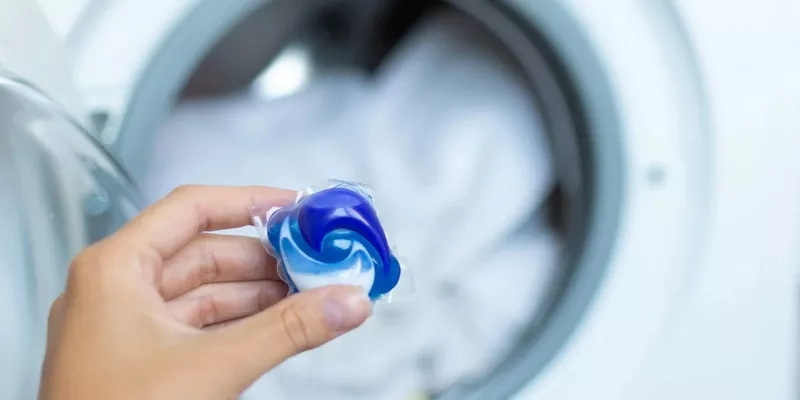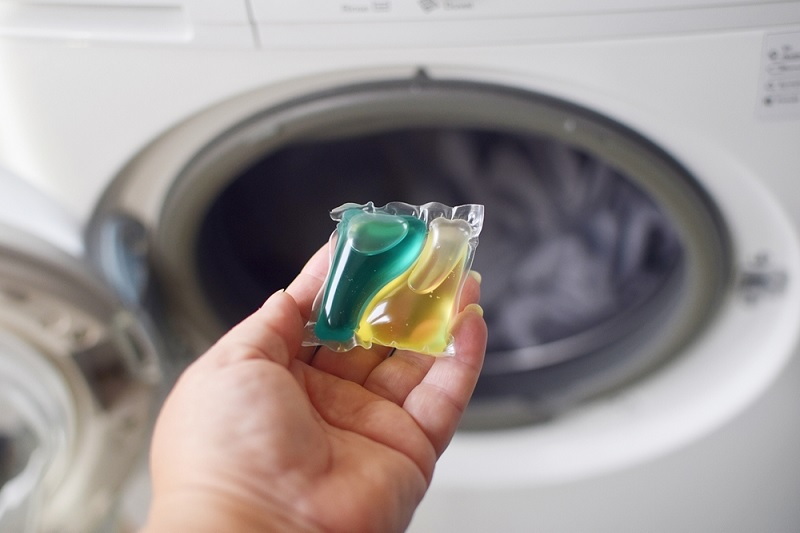Dongguan UFine Daily Chemical Co.,Ltd.
- All
- Product Name
- Product Keyword
- Product Model
- Product Summary
- Product Description
- Multi Field Search
Views: 222 Author: Tomorrow Publish Time: 10-27-2025 Origin: Site











Content Menu
● Why Laundry Pods Stick to Clothing
● Immediate actions before washing
● Effective removal techniques
● Special cases by fabric type
● FAQ
>> 1. What is the most effective method to remove laundry pod residue from cotton fabric?
>> 2. Can vinegar damage fabrics while removing pod residue?
>> 3. Should I use hot water to remove pod residue?
>> 4. Are enzymes always recommended for pod residue?
>> 5. When should I seek professional cleaning?
Laundry pods offer convenience, but their encapsulated detergents can sometimes cling to fabrics and resist removal. This article explains why laundry pods stick to clothing, the risks involved, and practical, step-by-step methods to safely detach and remove pod residue without damaging fibers. By understanding the mechanism and applying targeted techniques, you can minimize washday frustration and protect your garments.

- Skin-friendly polymers and surfactants: Pods are designed to dissolve quickly in water, but when agitation is insufficient or water temperature is low, the outer film may not rupture completely, leaving residue on fabrics.
- Film adhesion to fibers: The protective film can adhere to textiles, especially on or near seams, cuffs, or areas with wrinkling, where mechanical friction occurs during laundering.
- Mechanical carryover: Pods may rupture inside pockets or along folds, dispersing droplets that cling to fibers rather than washing away immediately.
- Residue composition: The film often contains polyacrylates and other polymers that resist immediate dissolution, particularly when the laundry load is small or the water is cold. This composition can create a film that acts like a micro-glue, sticking to natural and synthetic fibers alike.
- Inspect fabric type: Natural fibers like cottons and linens may release pod fragments differently than synthetics like polyester or nylon. Blends can exhibit intermediate behavior, depending on the dominant fiber and weave.
- Check colorfastness: Some pod residues can stain; test a hidden area or run a small, inconspicuous wash with a minimal amount of detergent to observe color transfer.
- Determine pod state: If the pod has partially dissolved, the remaining film may require targeted removal methods; if fully dissolved, residue is typically a stain rather than a film.
- Evaluate garment construction: Areas with embroidery, trims, or paints may interact with pod residue in unique ways, making targeted spot treatment essential.
- Remove excess residue: Gently lift unattached fragments with a dull edge or a lint roller to prevent embedding further into the fabric.
- Rinse with cold water: Cold water helps prevent setting of any potential stain and can loosen adhered film without driving it deeper into fibers.
- Blot, don't rub: Use a clean cloth to blot residue; rubbing can push material deeper into the weave.
- Check washing machine residue: If possible, run a quick empty rinse to clear any detached pods or fragments from the drum, reducing re-deposit on subsequent loads.
Soak in a mild solution
- Prepare a bowl with cool-to-warm water and a small amount of mild liquid detergent or stain remover.
- Submerge the affected area and let it soak for 15–30 minutes, agitating gently every few minutes.
- Rinse thoroughly and repeat if necessary.
Use enzyme-based stain removers
- Enzyme formulations target protein-based or starch-based residues and can help break down detergent compounds that cling to fibers.
- Apply according to product directions, then wash as usual.
Apply a paste of baking soda and water
- Create a thick paste and apply it to the stained area.
- Let it sit for 15 minutes before rinsing and washing.
Try vinegar for mineralized residues
- Mix one part white vinegar with two parts water, dab onto the residue, and blot briefly.
- Rinse and launder as normal. Test on a hidden area first to ensure no color change.
- Use hydrogen peroxide on whites or safe fabrics
- For white fabrics or fabrics labeled safe for mild bleaching, a diluted hydrogen peroxide solution can help lift residues.
- Do a spot test first and use care to avoid lightening colors.
Laundering cycle considerations
- Use a pre-wash cycle or extra rinse to remove residual film before the main wash.
- Choose an appropriate water temperature: commonly warm to help dissolve residues, unless the fabric care label specifies otherwise.
- Use an adequate amount of detergent to help saponify and lift remaining residues.
- Consider adding a second rinse cycle on the main wash to ensure removal of lingering traces.
Mechanical aids
- Gently agitate with a soft-bristle brush on sturdy fabrics to encourage film release, being careful not to abrade.
- Use a microfiber cloth to lift loosened residue after soaking.

- Cotton and linen: Usually respond well to soaking and mild detergents; avoid harsh solvents that could weaken fibers.
- Polyester and nylon: May release residues with enzymatic cleaners; test first to prevent fiber damage.
- Wool and silk: Treat with utmost caution; use mild detergents and avoid strong solvents. Seek professional cleaning if unsure.
- Delicate fabrics: For lace, chiffon, or fabrics with embellishments, opt for a professional cleaning method to avoid fiber damage.
- Pre-treat pods: Place pods in the drum before loading clothes rather than directly into a dispenser with water, if your machine's design supports it, to minimize direct contact with fabrics.
- Check pockets: Empty pockets thoroughly before washing to prevent accidental pod rupture inside garments.
- Use appropriate detergent quantity: Excess detergent can create more suds, potentially trapping pod residues on fabric fibers.
- Use the right machine settings: If your washer has a “gentle” or “delicate” cycle, prefer it for items prone to pod contact and residue.
- Consider load arrangement: Do not overload the drum; allow space for even water flow and thorough rinse.
- Using hot water on delicate fabrics to “force” residue off.
- Attempting to scrub with rough materials, which can fray fibers.
- Assuming all residues come out in a single wash—some fabrics may need repeat treatment.
- Using chlorine bleach on colors; it can cause uneven discoloration if residues interact with dyes.
- Professional cleaning: For delicate or expensive garments, consult a professional cleaner if you're unsure about home methods.
- Washing machine adjustments: If repeat issues occur, try a different cycle or adjust load size to reduce friction and improve rinse efficiency.
- Replacement considerations: If a garment has intrinsic color-fastness limitations, assess whether continued cleaning is feasible without compromising fabric integrity.
- Wear gloves when applying cleaners to protect skin.
- Test any treatment on a hidden area first to avoid color loss.
- If residue causes persistent odor or staining despite multiple attempts, consider replacing the item if restoration proves impractical.
- Ensure proper ventilation when using stronger solvents or vinegar/hydrogen peroxide mixtures to minimize inhalation risk.
Removing laundry pod residue from clothing requires careful assessment and a combination of soaking, enzyme-based cleaners, appropriate solvents, and careful washing practices. By understanding why pods cling to fabrics and following targeted steps, you can restore affected garments while preserving fabric integrity and avoiding repeat incidents on future washes.

Soak the affected area in a mild detergent solution for 15–30 minutes, then rinse thoroughly and wash as usual. If needed, apply an enzyme-based stain remover to further break down residues.
Vinegar is generally safe when diluted, but test on a hidden area first to ensure no color change or fiber damage.
No. Hot water can set some stains and damage delicate fibers. Use cool to warm water unless the fabric care label specifies otherwise.
Enzymes are helpful for many residue types, but always follow product directions and test on a small area before applying to the full garment.
If the garment is delicate, expensive, or shows persistent staining after multiple home treatments, seek professional cleaning guidance.